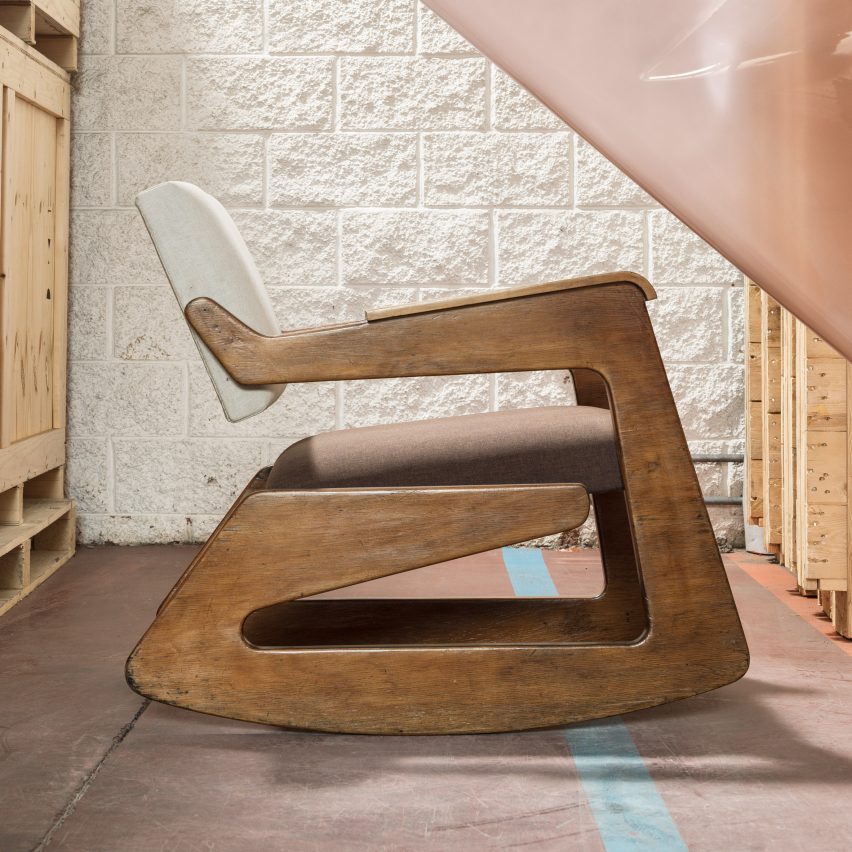
An exhibition at the Design Museum Gent brings together the largest collection of furniture by architect Lina Bo Bardi ever presented in one place. Curator Evelien Bracke selects her highlights.
The show – which opens on the 25 October and is titled Lina Bo Bardi & Giancarlo Palanti. Studio d'Arte Palma 1948-1951 – comprises 41 pieces by the preeminent Brazilian Modernist.
Many were created in collaboration with fellow architect Giancarlo Palanti, with whom she founded the titular Studio d'Arte Palma design practice.
Beyond highlighting Palanti's often overlooked involvement in the designs, the exhibition hopes to establish Bo Bardi as a master of all trades, whose holistic philosophy spanned various disciplines.
"Her work goes beyond just architecture or design – she created an entire universe," Bracke told Dezeen.
"The show not only undertakes a critical reappraisal of Lina Bo Bardi's contributions to architecture, design, education and social practice, but also introduces her work to audiences outside of the specialised field of architecture."
Bo Bardi's interest in furniture first appeared when she was tasked with creating a home for the Museu de Arte de São Paulo (MASP).
The museum was founded by her husband, the writer and curator Pietro Maria Bardi and Assis Chateaubriand, the owner of local media conglomerate Diários Associados, after the couple moved to Brazil from their native Italy in 1946.
As Bo Bardi set about transforming a floor of the Diários Associados headquarters into a museum space, she was looking for a chair, but "found absolutely nothing, both in terms of a chair and of modern furniture" in Brazil.
Ultimately, she took the chair's design into her own hands and went on to found the Studio d'Arte Palma in pursuit of a synthesis between her buildings and their interiors.
"Unlike many of her architect peers in Brazil, she emphasised early on the relevance of furniture and interiors to the country's modernist discourse," explained Bracke.
"Her creations combine innovation with the preservation of cultural traditions, and anatomic perfection with the imperfections of the handmade. With this approach she stood at the cradle of Brazilian design, and continues to influence new generations."
Bo Bardi's Estúdio Palma designs, much like her buildings, often incorporate local materials to give the pieces a sense of context.
"The effect of Bo Bardi's spontaneous, free hand and undiscriminating imagination can be seen in the vibrant and irregular details," said Bracke.
"Palanti meanwhile was deeply immersed in the rationalist milieu of Milan, and his rigorously plain geometries dominated the composition of their work."
Here, the curator picks five seminal furniture designs from the studio and explains how they were ahead of their time:
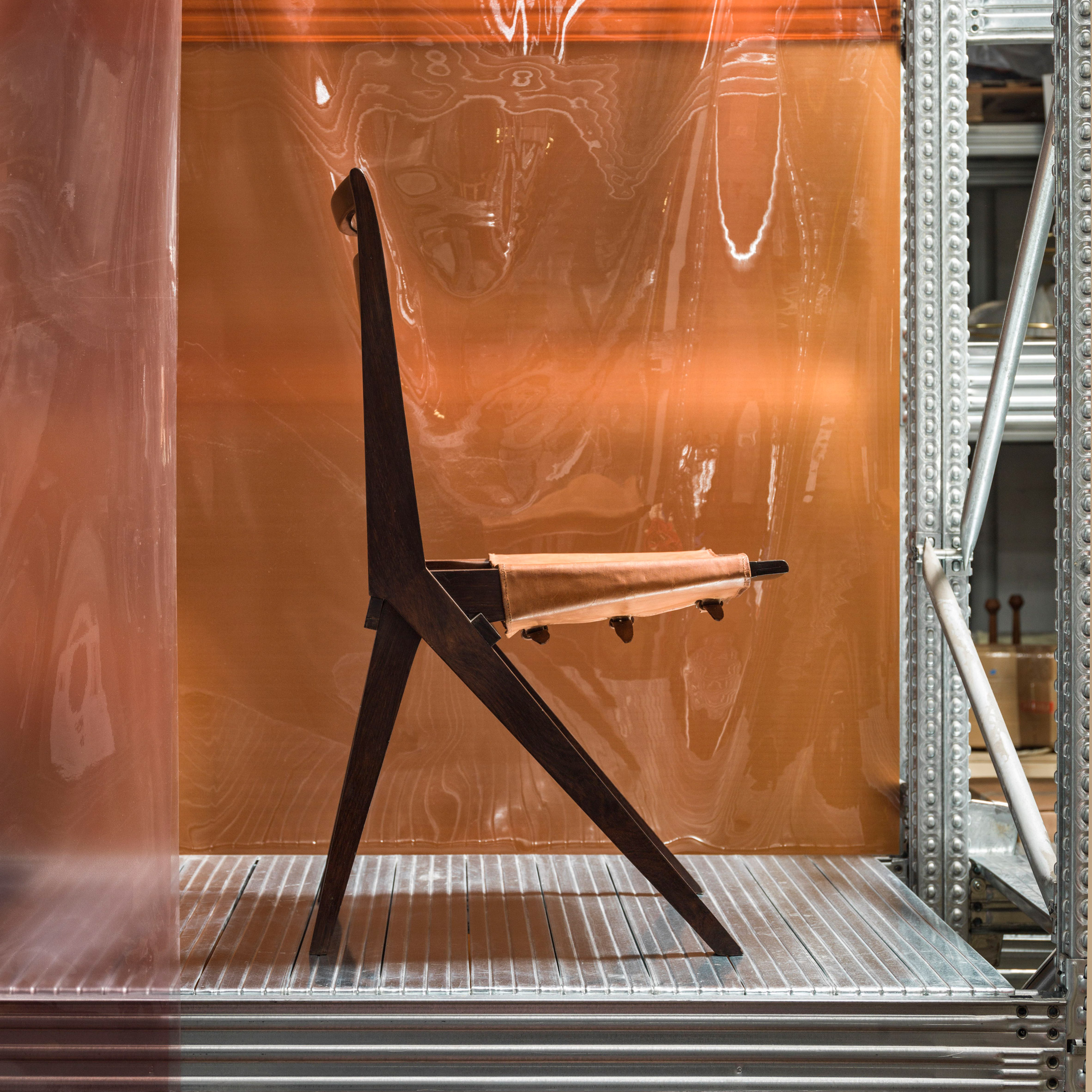
MASP chairs designed for the Museu de Arte de São Paulo auditorium, 1947
"The need to maximise the meagre space available in the auditorium of the MASP museum's first location led Lina Bo Bardi to plan an auditorium with furniture that was simple, comfortable and that could be quickly and easily removed," explained Bracke.
"To meet these requirements, Lina created this chair which could be stacked whenever there was a need to use the full space of the auditorium."
The product's first iteration – which Bracke claims to be the very first foldable, stackable chair ever to be made in Brazil – was made of jacaranda wood.
This highly durable, local material was used as the base and finished with leather upholstery, while later versions used plywood and canvas as more readily available and affordable materials.
Like many of Bo Bardi's furniture pieces, the chairs were created on commission, meaning they had limited distribution.
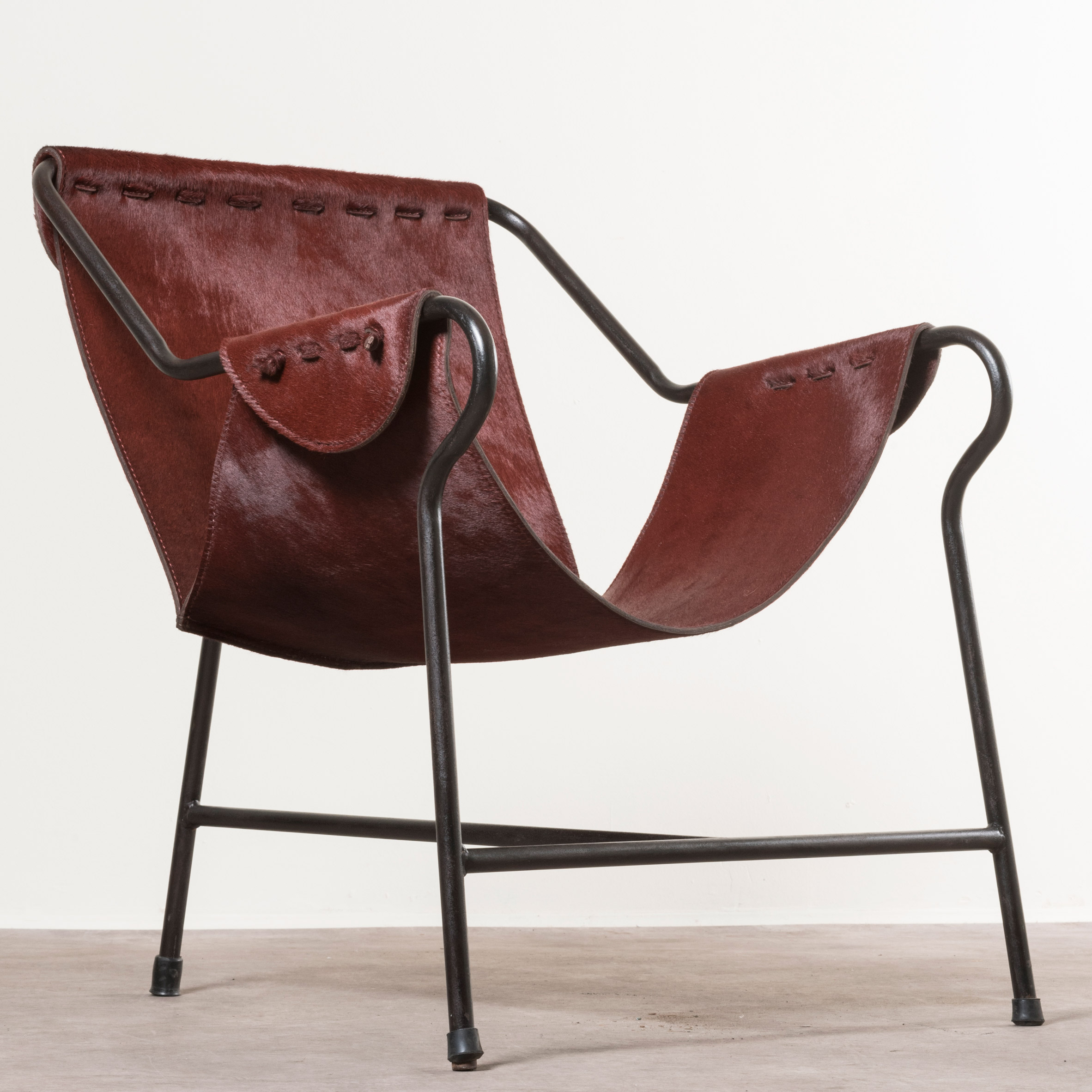
Tripé armchairs by Estúdio Palma, 1949
"Bo Bardi and Palanti's design for this armchair was influenced by the use of Indian hammocks which could be found on boats travelling the rivers of northern Brazil," said Bracke.
"She described them as a cross between a bed and a seat, noting that: 'its wonderful adjustment to the shape of the body and its undulating movement makes it one of the most perfect devices for rest.'"
While early iterations of the piece used wood for the frame, alongside a slung seat in thick canvas or leather, this more lightweight version relied on a metal base.
In a note written by Pietro Maria Bardi after his wife's passing, he described her approach to buildings and furniture as inextricably linked: "For Lina designing a chair meant abiding by architecture. She emphasised the architectural aspect of a piece of furniture. She saw architecture in every object."
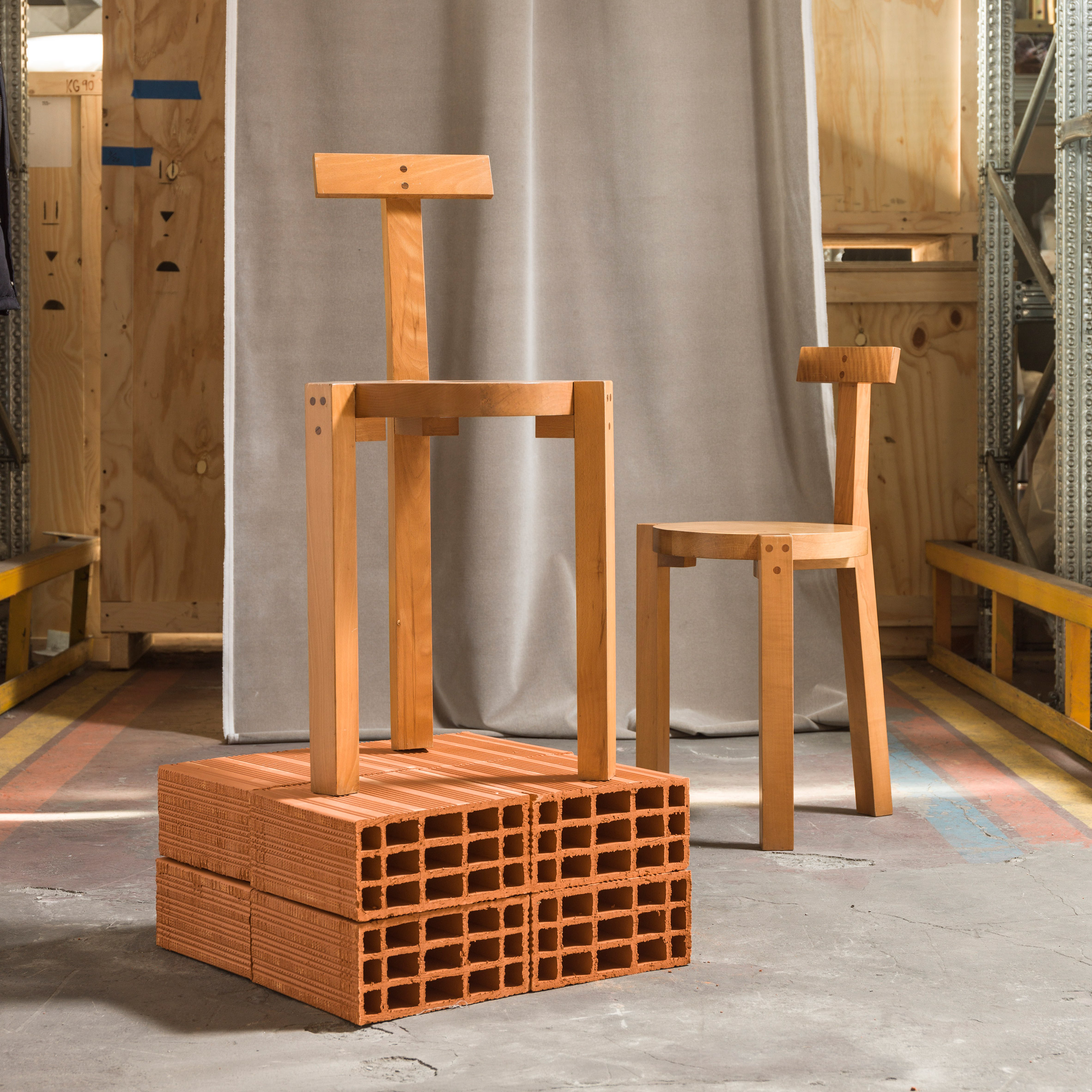
Girafa table and three chairs designed for the Casa do Benin restaurant, 1987
"After the Estúdio Palma period, Bo Bardi designed furniture almost exclusively for public buildings she created herself in keeping with her idea of 'poor architecture'," said Bracke.
This refers to the use of minimal, humble materials to create the biggest possible impact, hoping to eliminate "cultural snobbery" in favour of "direct, raw solutions".
"One example of this are the Girafa chairs and tables, which she designed for a restaurant in the garden of the Casa do Benin museum in Salvador," Bracke continued. "They also re-emphasised the importance she attributed to furniture within her broader architectural agenda outside of her work for the studio."
The pieces, which were developed in collaboration with her assistants Marcelo Ferraz and Marcelo Suzuki, are still produced today by the Brazilian brand Dpot and can be tried out by visitors of the exhibition at the Design Museum Gent.
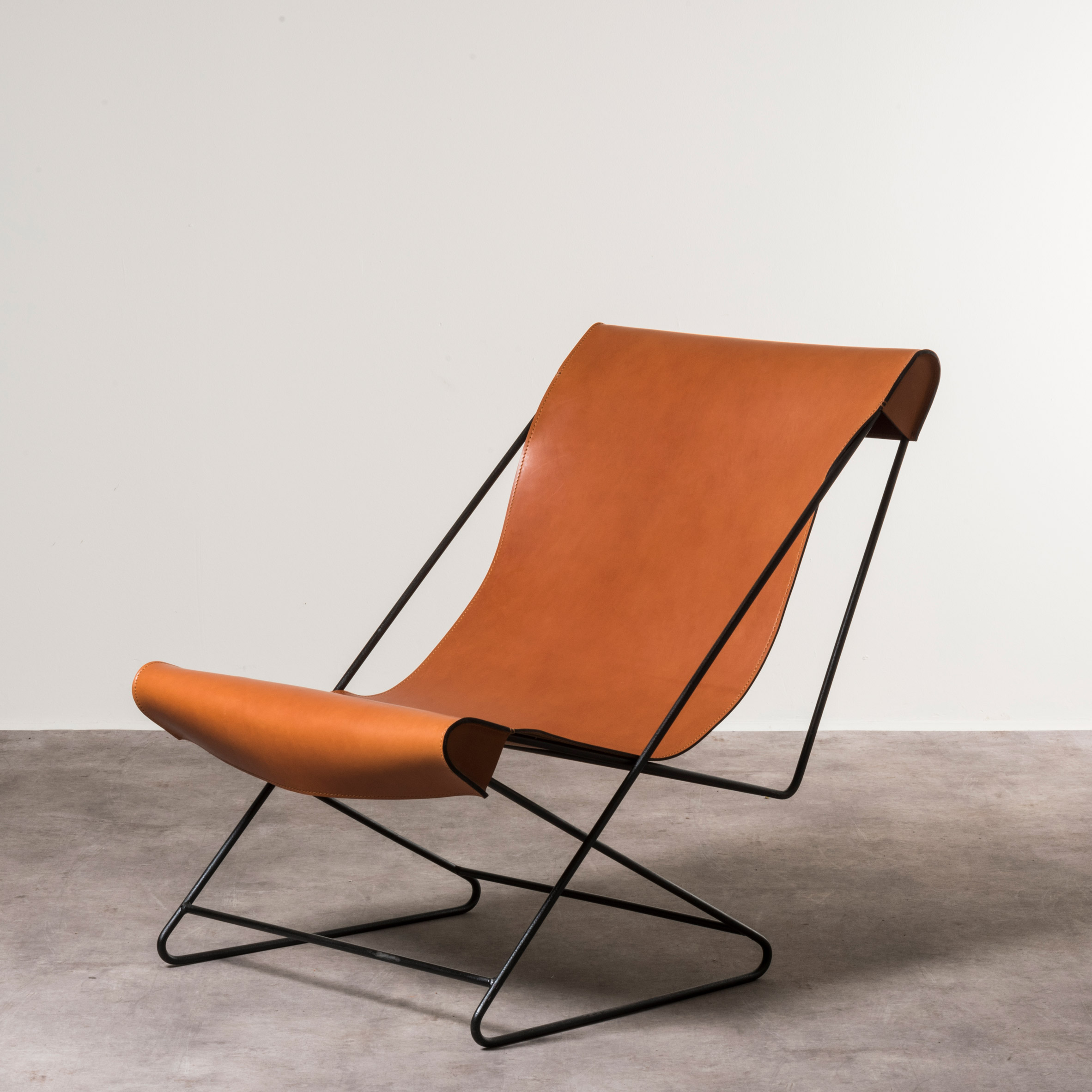
Deckchair designed for Casa Valéria Cirell, after 1958
The only exception to Bo Bardi's singular focus on public rather than private spaces was this chair.
"She produced this garden lounger for her friend Valéria Cirell, whose house she had built in a residential area of São Paulo" said Bracke.
It consists of removable leather upholstery suspended on an iron frame.
"The distinctive frame is reminiscent of the iconic Butterfly Chair," continued Bracke. "And recent research by Milan's Nilufar Gallery proves that she in fact created the concept several years earlier, probably during the Estúdio Palma period."
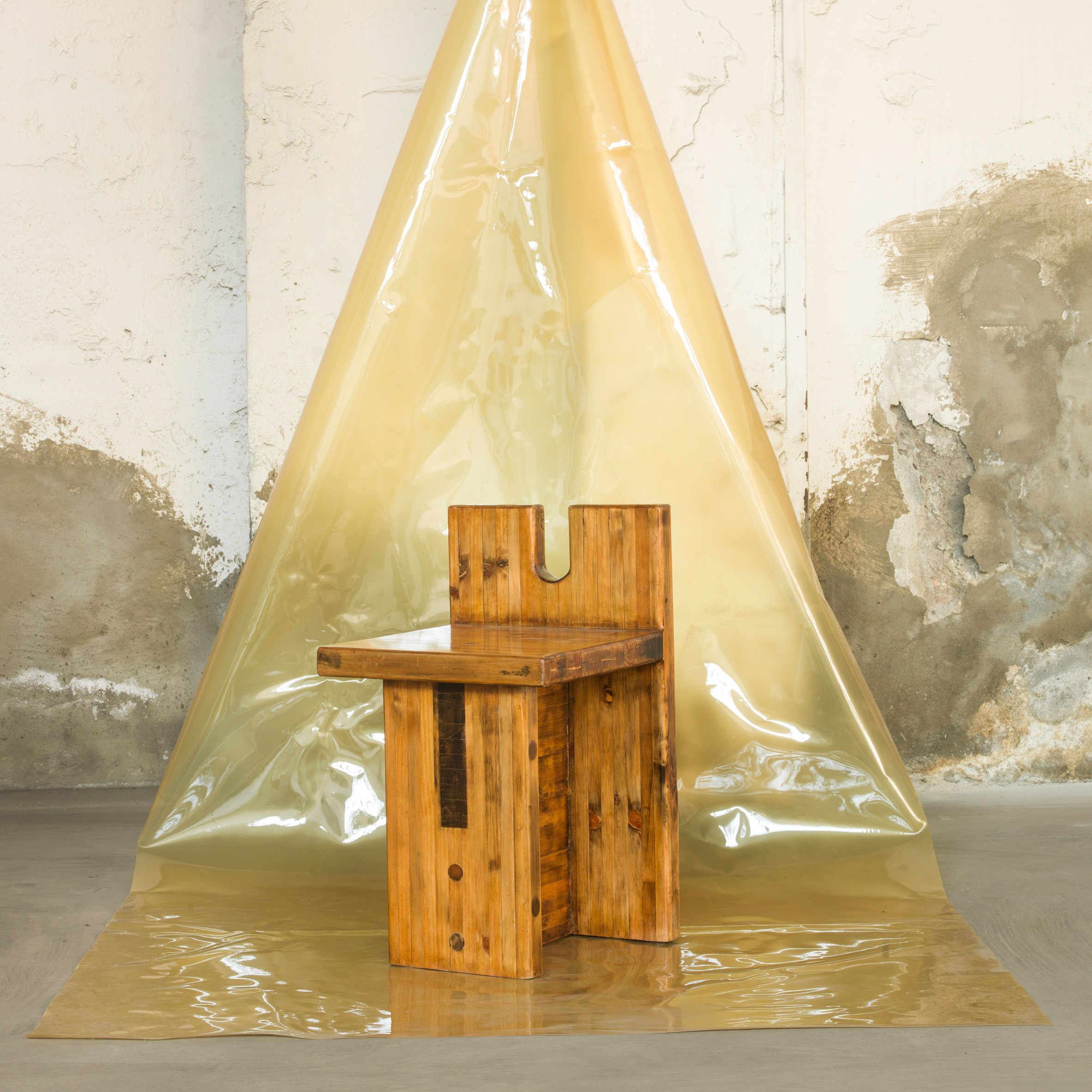
Chairs designed for SESC Pompéia, 1980s
Bo Bardi's notion of "poor architecture" is perhaps most famously exemplified by the sports and cultural centre SESC Pompéia – a former steel-drum factory whose raw concrete exterior she left largely intact, but punctuated with windows and angular, aerial walkways.
"Lina applied these same ideas in her furniture," said Bracke. "You can see that in the tables and chairs she designed for SESC Pompéia, which are made of thick wooden blocks and planks."
"She used slash pine, a reforestation species which is very durable. Her friend, the chemical engineer Vinicio Callia, had been researching the material and found that it could be used when young, around eight years old, when treated and bonded with a specific chemical formula," continued Bracke.
As the material met both aesthetic and practical demands, Bo Bardi went on to use it for everything from sofas to children's tables while, as always in her work, being guided by the natural properties of the material.
The post Lina Bo Bardi exhibition curator picks five seminal furniture designs appeared first on Dezeen.
https://ift.tt/2Bx8Uyn
twitter.com/3novicesindia
No comments:
Post a Comment